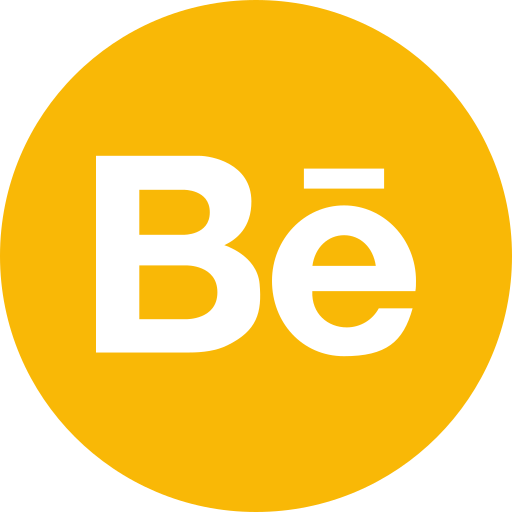
2D Animation vs 3D Animation: Which is Easier?
This way, with cartoon movies, the question is: to create it in 2D or to create it in 3D? Is this question of choice, just a matter of personal preference and taste? Or is it more than that-functional? Which one takes less time to master? Which takes less time and resources? Let's get closer to this world of 2D and 3D animation to find some of the answers.
Key Takeaways:The ease of 2D vs 3D animation depends on technical skills, creativity, and tools used
3D animation requires more complex technical skills and software
2D animation is often more labor-intensive and time-consuming
Both styles demand high levels of creativity but in different ways
The "easier" option depends on individual strengths and project requirements
Key Takeaways:
The Technical Tango: Skills Required
The global animation market was valued at $259 billion in 2021 and is expected to reach $587.1 billion by 2030. This explosive growth highlights the increasing demand for both 2D and 3D animation skills.
| Sno | 2D Animation Skills | 3D Animation Skills |
|---|---|---|
| 1 | Drawing Skills: At its core, 2D animation requires strong drawing abilities. You'll be creating characters, backgrounds, and objects frame by frame. | Modeling: Simply stated, modeling consists of the process of creating 3D models using specialized software |
| 2 | Anatomy Knowledge: Understanding how bodies move and how facial expressions work is crucial for creating believable characters. | Rigging: It generates a digital skeleton to produce movement on characters to give them a realistic look. |
| 3 | Digital Tools: While traditional hand-drawn animation still exists, most 2D animators now use digital tools and software. | Texturing: Applying realistic textures onto a model for a three-dimensional model, an appropriate similarity to reality. |
| 4 | N/A | Lighting and Rendering: These also play a significant role as far as lighting your scene and rendering the final image are concerned. |
This table provides a clear comparison of the technical skills required for both 2D and 3D animation. As you can see, while there’s some overlap, the skill sets are quite different.
Interesting Fact:
Interesting Fact:
- Traditional 2D animation requires 24 frames per second for smooth motion. That means a 10-minute cartoon could need up to 14,400 individual drawings!
- The first fully computer-animated feature film, Toy Story (1995), took 4 years to make and required a team of 110 animators!
The Creative Canvas: Unleashing Imagination
Both 2D and 3D animations are equally important but, when relating to creativity, they assert them in different manners.
2D Animation: Creative Canvas Mainly, in the 2D perspective, it would be expressed by:
Fun Fact: The longest hand-drawn animated film, "The Thief and the Cobbler," took 31 years to complete, showcasing the intense labor involved in traditional 2D animation.
2D Animation: Creative Canvas Mainly, in the 2D perspective, it would be expressed by:
- Artistic Choices: In contrast, 2D animators have much greater latitude regarding the range of artistic possibilities from very realistic to very stylized.
- Simpler: It is simpler to attain extreme movements and expressions, which will add depth to the storytelling.
- Background Design: Highly distinctive, hand-painted backgrounds create the mood for each scene.
3D Animation: Digital World-Building
3D animation channels creativity through:
Fascinating Stat: A single frame of the movie "Monsters University" took an average of 29 hours to render. With 24 frames per second, that’s a lot of rendering time!
- Practical Detail: 3D supports highly realistic and robust detail in characters and environments.
- Camera movement: An exploration of 3D space from all sides will open new avenues for narration.
- Lighting and Atmosphere: Elaborate lighting to create mood and atmosphere.
Tools of the Trade: Software and Hardware
The tools used in 2D and 3D animation differ significantly, which impacts the learning curve and ease of use.
Industry Insight: Toon Boom Harmony is used by 80% of animation studios worldwide for 2D projects.
Tech Fact: Pixar’s RenderMan software, used for 3D rendering, has been used in 44 out of the last 47 films nominated for an Academy Award in Visual Effects.
| 2D Animation Tools | 3D Animation Tools |
|---|---|
These are much less involved than their 3D counterparts as their interfaces mimic all forms of the customary drawing and painting tools. |
Such programs do call for pretty powerful computers, very specifically when rendering really complex scenes. |
Industry Insight: Toon Boom Harmony is used by 80% of animation studios worldwide for 2D projects.
Tech Fact: Pixar’s RenderMan software, used for 3D rendering, has been used in 44 out of the last 47 films nominated for an Academy Award in Visual Effects.
Time and Resource Considerations
When it comes to production time and resources, 2D and 3D animation have different demands:
Production Fact: A typical 22-minute 2D animated TV episode can take between 6 to 8 months to produce from start to finish.
Industry Trend: The global 3D animation market is expected to grow at a CAGR of 11.7% from 2021 to 2028, driven by demand in the gaming and film industries.
| 2D Animation: Labor-Intensive but Flexible | 3D Animation: Front-Loaded but Efficient |
|---|---|
|
|
Production Fact: A typical 22-minute 2D animated TV episode can take between 6 to 8 months to produce from start to finish.
Industry Trend: The global 3D animation market is expected to grow at a CAGR of 11.7% from 2021 to 2028, driven by demand in the gaming and film industries.
So, Which One Is Easier?
That is not the easiest 2D or 3D animation decision that can be made that one is easier to use. There couple of reasons:
Educational Insight: On average, it takes about 1-2 years to become proficient in 2D animation, while mastering 3D animation can take 2-4 years of dedicated study and practice.
- Your Strong Points: If you can draw very well, 2D will probably be easier; if you understand space and technology, 3D may be more your line.
- Project Type: Some stories and visual styles are more suited to 2D; others demand or even require the reality that 3D allows for.
- Available resources: The biggest disadvantage of 3D animation is the usage of relatively costlier software and hardware in it. Sometimes, this can reach beyond one's limits or budget.
- Learning Curve: Both have steep learning curves but most find the early concepts of 2D animation easier to understand.
- Production Goals: Projects having a faster turnaround can allow 2D to work better. In the case of the long-term reusable assets, 3D might be more effective in the process.
Conclusion: Finding the Right Fit
The balance of skill, resource, and goal between "easier" would be displaced as well. Both 2D and 3D animation will present simultaneous challenges and rewards because both tend to create an outcome. Naturally you would want to try both to see which style will vibe the most with your creative vision and workflow.
Whether it's charm drawing 2D by hand or drawing depth from within 3D, remember that good animation requires passion, practice, and perseverance. Pick up the pencil or turn on that 3D software and bring out ideas that will materialize out there in the world!
Whether it's charm drawing 2D by hand or drawing depth from within 3D, remember that good animation requires passion, practice, and perseverance. Pick up the pencil or turn on that 3D software and bring out ideas that will materialize out there in the world!
FAQ
- Is 2D animation cheaper than 3D animation? Generally, yes. 2D animation often requires less expensive software and hardware, making it more accessible for smaller budgets.
- Can I mix 2D and 3D? Of course, modern productions often combine 2D and 3D for a unique visual feel.
- How long does it take to learn 3D animation? It varies, but at least 6-12 months for the basics, and years for more advanced techniques.
- Is hand-drawn animation still used in this industry? Yes, more precisely in traditional animation studios and in specific artistic manners in films and TV series.
- Is artistry necessary for 3D animation? Not as much as in 2D, but there is still a huge benefit of it in 3D for design, texturing, and the basic aesthetics.
- Which is better to start off with as a beginner? 2D animations often have a gentler learning curve due to the fact that most of the time, it’s less involved than starting off with 3D animations.
- Is it possible to do a career in 2D and 3D animation? Yes! Many animators do both, which perhaps makes them more versatile and more of an asset within the industry.
Let's Discuss !!














